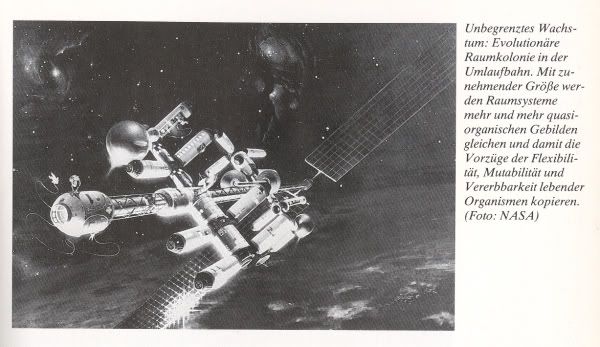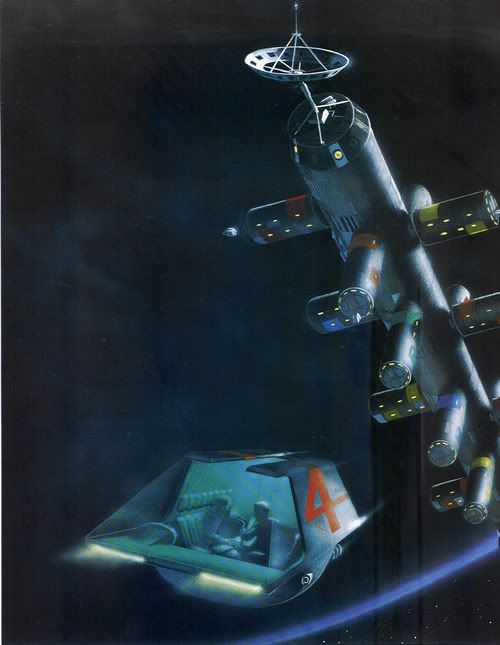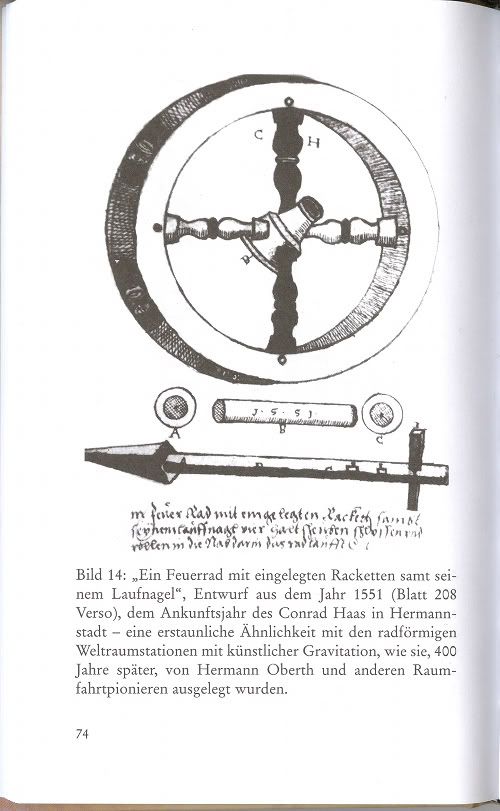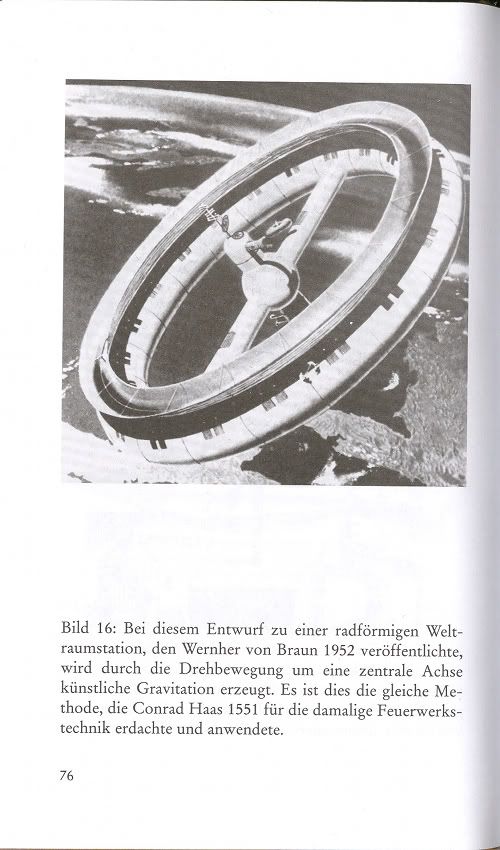It's a perfectly fine orbiting city, sufficiently removed from early 20th century space experiments to create the verisimilitude of a futuristic structure. Unlike, say, the office complex of TMP, which features modularity where none is due...
Haven't we had this discussion, like, a dozen times over the last five years? Modularity is
always due for manned spacecraft and platforms which are expected to last longer than a condom, particularly when it comes to a structure which
Probert describes as "an older facility that's continuing to evolve". Speaking of evolution, I was recently rereading Jesco von Puttkamer's
Der erste Tag der neuen Welt: Vom Abenteuer der Raumfahrt zur Zukunft im All (Umschau Verlag, 1981) and was struck by this illustration:
The caption reads:
"Unlimited growth. An evolutionary space colony in orbit. With increasing size space systems will increasingly resemble quasi-organic entities and thus replicate the advantages of flexibility, mutability and heredity of living organisms."
On the other hand,
this is what happens when your space platform
isn't modular and is therefore incapable of "evolving" to meet new needs.
Coincidentally, the NASA "Evolutionäre Raumkolonie" was the particular space station illustration that Mike Minor employed as the basis for his original
Phase II Space Office Complex:
...and uses absurdly shaped modules at that. Why a pillbox? It isn't something you can launch to orbit easily.
Why would the habitat modules be launched from Earth? Presumably they would have been fabricated by either the SOC's own industrial facility or at another Starfleet space manufacturing center nearby. Indeed, the trajectory of the workbee carrying a piece of framework to the construction site suggests the latter.
It's not the best way to maximize useful floor area, either: something with corners would be superior.
The "office level" can be grown as large as necessary by adding additional clusters, and corners would block views above and below the neighboring hab modules.
And why lay out the modules so that they obscure each others' rim windows and hatches? Why not just stack them atop each other, considering that there are no dorsal or ventral features of note that would require exposure?
But the modules do extend above and below the main level thanks to angled access ways, thus increasing the amount of spacescape visible from most viewports. Besides, since that particular section is still under construction we don't even know how many levels there will be upon completion.
TMP is full of stuff that pretends to be "spacelike" by taking an element of 20th century space engineering here, another there, and putting them together in illogical fashion - completely forgetting that it's not the 20th century that the movie is trying to portray, but the 23rd.
Horseshit. Good engineering principles are timeless. The rotating artificial gravity space station
Conrad Haas designed in 1551...
....was conceptually sound enough for Wernher von Braun (amongst others) to effectively reinvent four hundred years later:
Pages scanned from Hans Barth's
Conrad Haas: Raketenpionier und Humanist (Johannis Reeg Verlag, 2005).
At least this Spacedock thing is a step away from that conceptually flawed approach.
If
ST:TMP's approach was conceptually flawed then it followed in the footsteps of
TOS, whether the preexisting real-world aerospace hardware proposals were the (unseen) "
planetoid colonies" of
Friday's Child which were first popularized by Dandridge M. Cole & Donald W. Cox in
Islands in Space: The Challenge of the Planetoids (Chilton, 1964) or Deep Space Station K-7 from
The Trouble with Tribbles which was little more than scaled-up Douglas Aircraft
contractor models.
Phase II continued the approach, whether the inspiration was the "Evolutionäre Raumkolonie" mentioned above or Peter Lizon's
Tetrahedron City. However, since the
ST:XI trailer has shown us an Earth-orbiting
space platform which looks uncannily like a semi-completed
Star Wars Death Star attached to six of those mothership saucers from
V, you should be thrilled that your preferred
Trek hardware design "process" has once again triumphed over mine.

TGT





